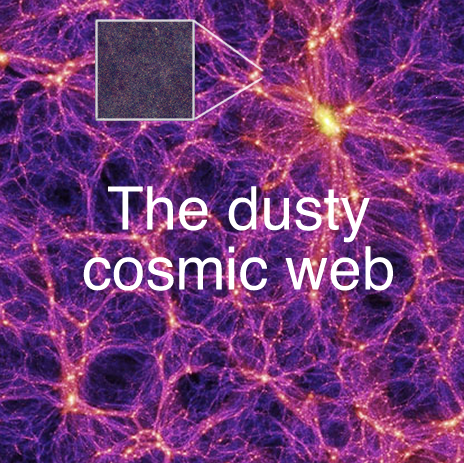The (dusty) Cosmic Web

This image shows our entire very first dataset taken with Herschel, set into a computer simulation of the structure of dark matter in the Universe. The Herschel data shows a small area of sky which is about 4 x 4 degrees across. In this image, we literally see thousands of galaxies: each galaxy appears as just a pinprick but its brightness allows astronomers to determine how quickly it is forming stars. The Herschel ATLAS dataset will make it possible to study the last few billion years in the history of galaxies and the stars which are forming in these systems in great detail. We cover so much of the sky, that combined with multi-wavelength data from other surveys, we will be able to determine the redshifts for the galaxies and find out how far away they are. What we're interested in is finding out how 'friendly' Herschel galaxies are with each other. If they're close together that tells us about the size of the dark matter halo they live in. So far, it seems that nearby Herschel sources are actually 'anti-social' and live in low mass haloes, while those at greater distances are clumped together and seem to trace massive haloes in the early Universe (see Maddox et al. 2010 and Guo et al in preparation). We can use this data to probe the large scale structure of the Universe, the so-called "Cosmic Web".
Image Credit: Millennium Simulation Project and ESA/SPIRE/H-ATLAS inset. Not too scale.